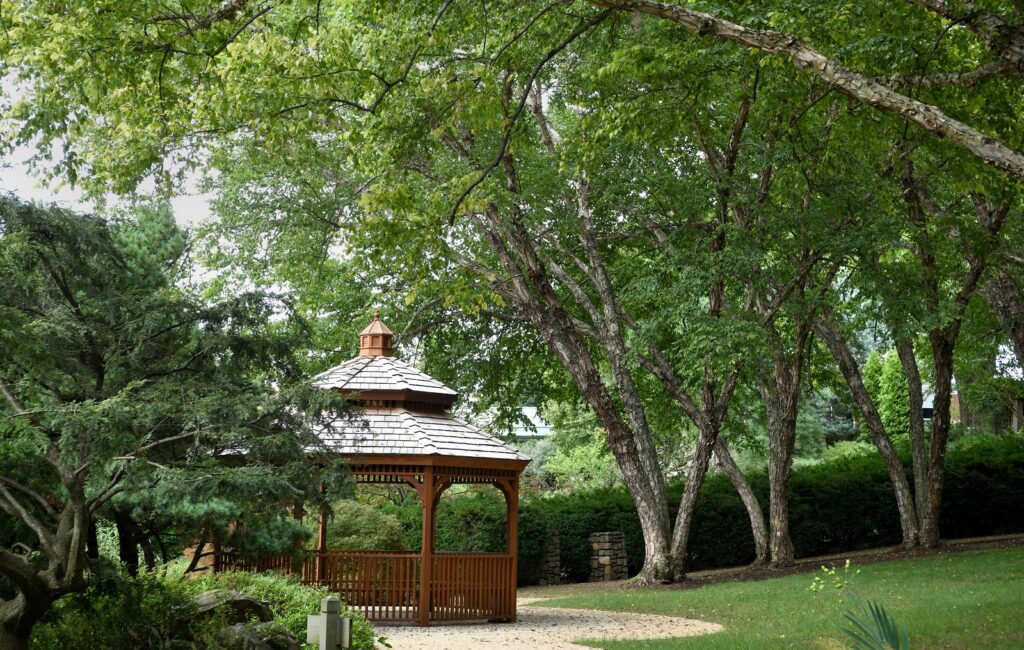By Beth JoJack
What’s the best season for visiting the Community Arboretum, the two-acre educational garden located on the Virginia Western Community College campus?
“Depends on who you ask,” said Clark BeCraft, Horticulture Program coordinator at Virginia Western Community College.
As plants, shrubs and trees move through their life cycles, the Arboretum changes, delivering an evolving bounty of delights throughout the year. Visitors are invited to stop by year-round, from dawn to dusk.
Here are the highlights of the Arboretum in summer, fall, winter and spring.
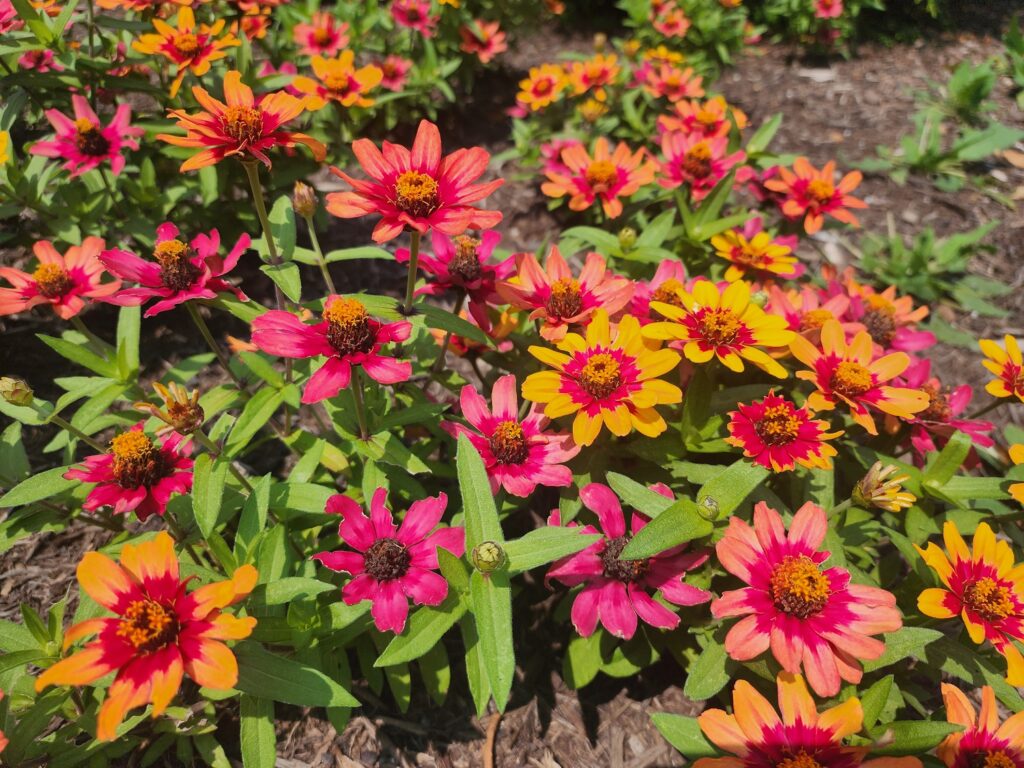
SUMMER
Annuals topped the list of favorite offerings in the Arboretum in summer.
These can be found in the bed that sits adjacent to Colonial Avenue, the tiny sliver of the Arboretum that’s visible from the road, and the All-America Selections (AAS) Display Garden, located below the Arboretum’s City Garden Deck.
The AAS is a nonprofit based in Illinois that tests new varieties of flowers and vegetables for the home gardener. The Community Arboretum is among 200 AAS Display Gardens in the United States that plant AAS winners for the public to check out in person.
Profusion zinnias
This hybrid variety is a cross of the varieties Zinnia angustifolia and Zinnia elegans. They come in a wide range of colors.
BeCraft’s favorite of the profusion zinnias is the red yellow bicolor. As the flower matures, he explained, it changes from yellow with a red center to a dusty rose.
New Look celosia
New Look celosia boasts burgundy leaves and scarlet red plumes. “You grow it for the foliage and the color,” said Tonya Judd, horticulture technician at Virginia Western.
New Look has long-lasting flowers. It grows best in full sun to partial shade and is adaptable to dry growing conditions.
Claire Privitera, a Master Gardener and a volunteer at the Arboretum since 2012, counts herself as among the celosia’s biggest fans.
“They just add beautiful color to a garden and are so easy to grow,” she said. “What’s not to love?”
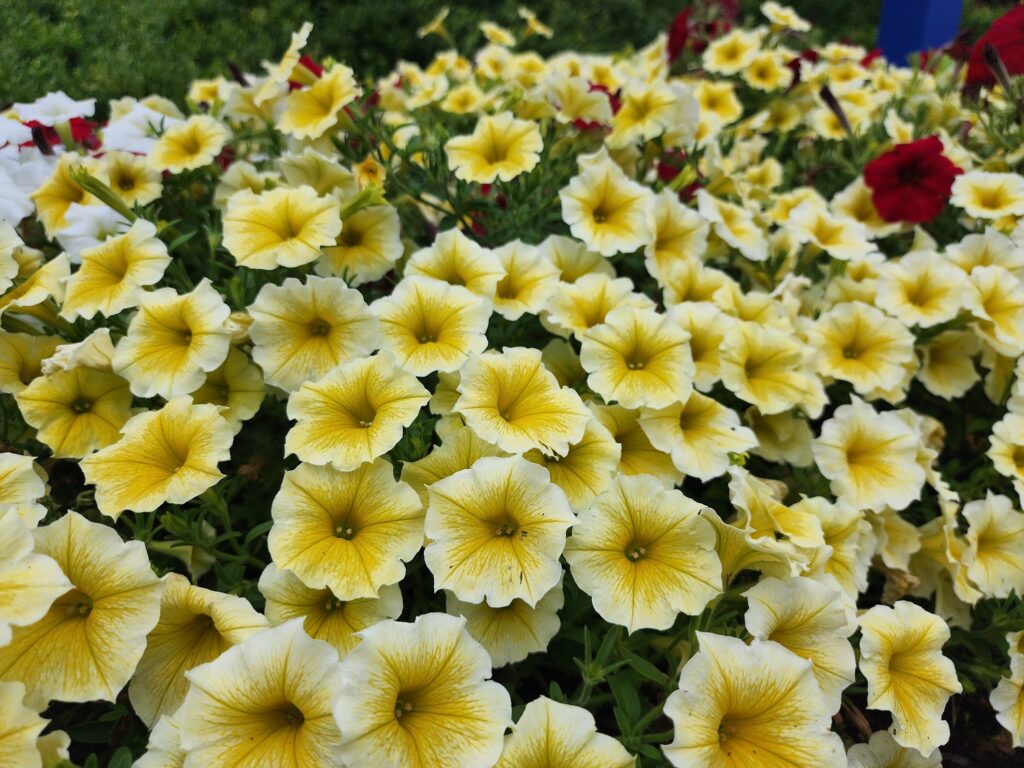
Petunia Bee’s Knees
Bee’s Knees can be found at the City Deck, in the Sensory Garden and outside the Natural Science Building.
The sunshine yellow flowers bloom all summer long and into autumn. Bee’s Knees don’t require deadheading and are hardy, heat tolerant and resistant to heavy rain and wind.
“You can use them in hanging baskets, and it’ll cascade over the edges of the basket,” BeCraft said.
SunPatiens
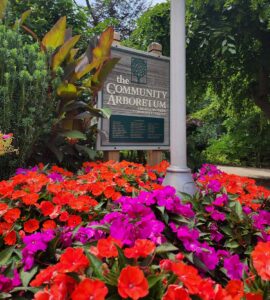
SunPatiens can be found in the Sensory Garden. These sun-worshipping impatiens thrive in hot temperatures. No pruning or deadheading is required, and they bloom from spring to fall.
“They’re good for mass plantings,” BeCraft added, “if you have a large bed and you want full color.”
FALL
Different trees in the Arboretum slip into their autumn leaves at different periods from late September to early November. “It’s kind of a progression,” BeCraft said.
That means it’s worth visiting more than once in the fall.
Deciduous conifers
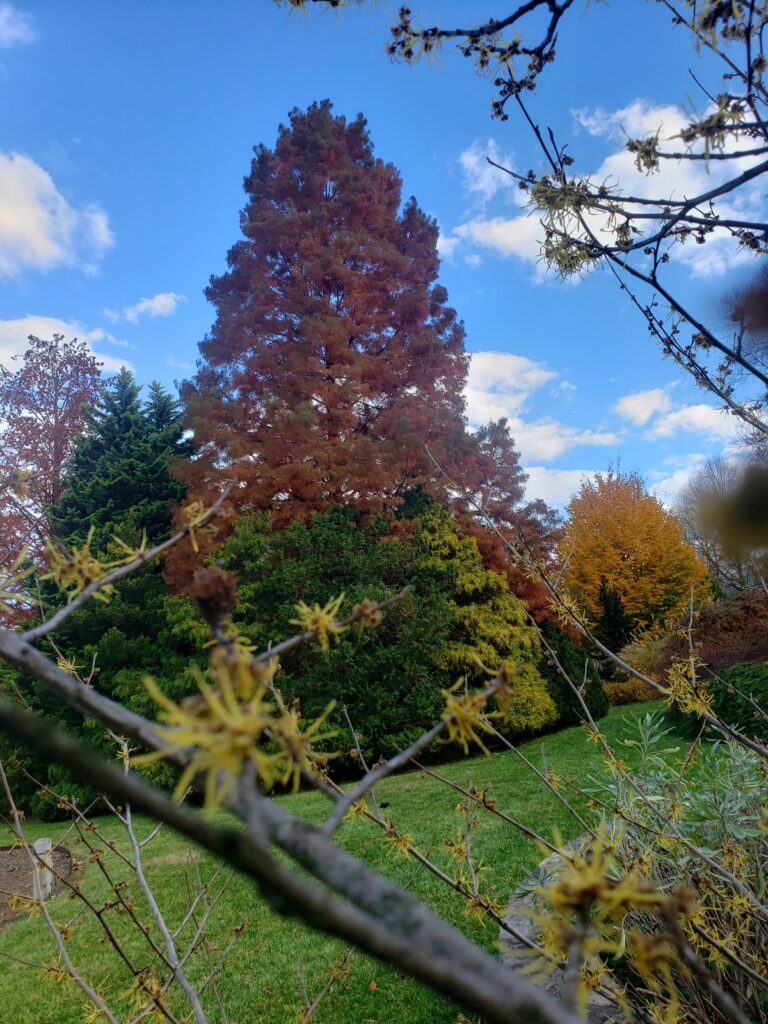
The dawn redwood, the pond cypress and the bald cypress tend to steal the spotlight in October.
“These are 50 feet tall, at least,” said BeCraft. “So they stand out in the landscape when they turn that russet fall color against those October blue skies.”
All three trees are deciduous conifers. “When you think of conifers you think evergreen, like a pine tree, but these are conifers that lose their leaves every fall,” BeCraft said.
Ginkgo
This 75-foot-tree stands in the arboretum’s Shade Garden. “It’s just striking!” Judd raved.
Fans of the ginkgo have to stay alert to catch its fall display. Judd will typically post on the Arboretum’s Facebook site when the tree turns yellow. At best, visitors will have a week to catch the ginkgo in its autumn glory.
“If you get a night that’s in the low 40s, it’ll drop its leaves overnight,” BeCraft warned.
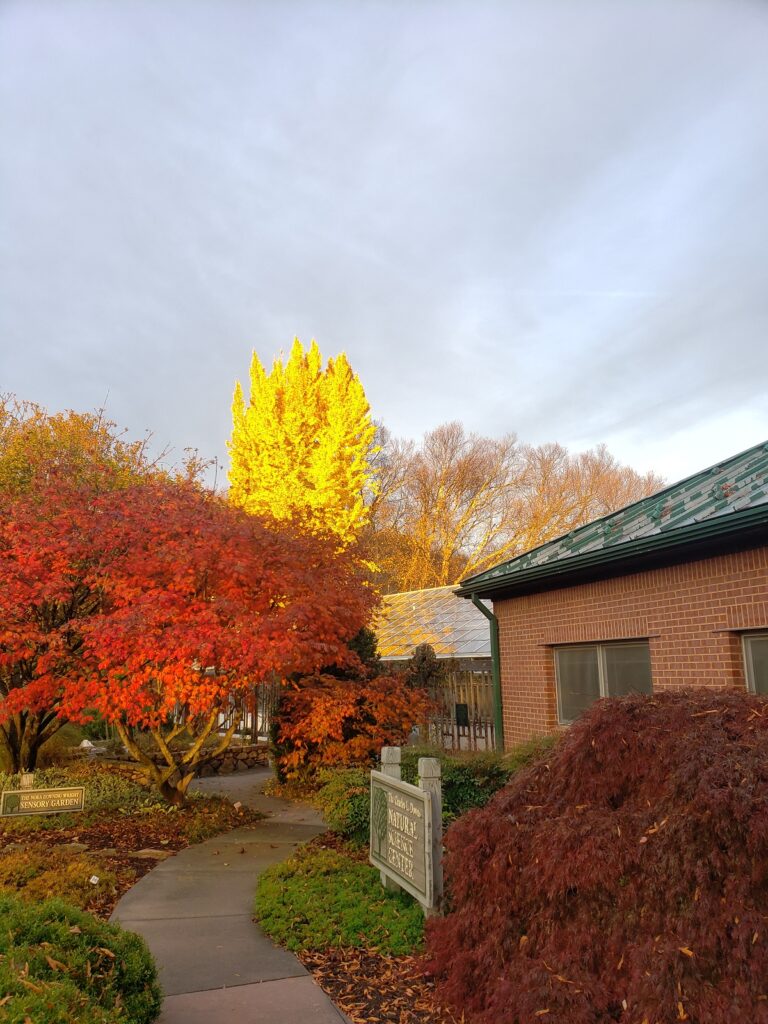
Japanese maple
You can’t walk far without stumbling upon a Japanese maple at the Arboretum.
An Orangeola Japanese maple stands near the Natural Science Center. Its leaves go from red-green to fire-orange-red in the fall.
The Rock Garden boasts two Threadleaf Japanese maples which have “thread-like” leaves that turn from deep purple to red, burgundy and burnt orange in the fall. The Hogyoku Japanese maple, found in the Shade Garden, has leaves that turn yellow and jack o’ lantern orange in the fall.
A Dancing Peacock Japanese maple stands in the Sensory Garden. In the fall, its leaves will be painted with splashes of yellow, red and orange. The Children’s Garden Plant Zoo has a Red Dragon Japanese Maple, which has leaves that go from purple to scarlet in autumn.
Witch hazel
This deciduous shrub, which is native to the greater part of eastern North America, can be found in the Arboretum’s Herb Garden. It blooms in the fall. “It has a beautiful orange-yellow fall color,” BeCraft said.
WINTER
Not many visitors make it to the Arboretum on snowy days because of slick roads — and that’s a loss, according to BeCraft.
“The snow on the gazebo roof as a contrast to the pine and spruce trees that are adjacent to the gazebo is striking,” he said. “Sometimes the sun is shining and the ice and snow is melting, and you get this mist or steam rising.”
Even on clear days, though, “the winter allows you to see textures and colors of plants that you wouldn’t see during the growing season,” BeCraft said.
Possumhaws
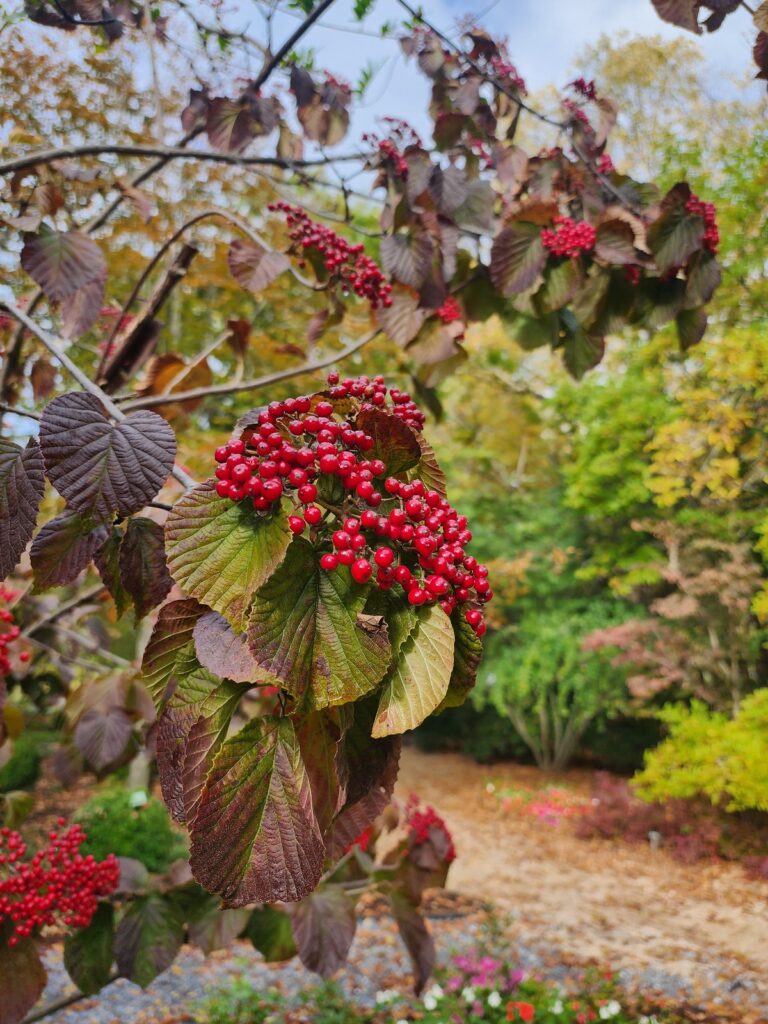
Native to the southeastern United States, the Possumhaw Viburnum is a deciduous shrub. Its distinctive name is believed to stem from early colonists who saw opossums eating berries from the shrub that resembles a European hawthorn.
In late fall, the flowers of the Possumhaw Viburnum produce fruits that can be bright pink, blue and purple. More visible in winter, they’re prized by birds.
The Possumhaw holly is similarly adorned with red berries, making it another winter superstar of the Arboretum. Birds and many mammals enjoy its fruit.
Hellebore and snowdrops
Head to the Shade Garden to view these beauties.
The hellebore, an evergreen plant, produces its long-lasting flowers in January and February. Hellebores with pink and white and even black blooms grow at the Arboretum.
Planted as bulbs, snowdrops bloom in January and February.
“They’re little,” said BeCraft. “They only stand about six inches tall and have white blooms, hence the name.”
Saucer and star magnolias
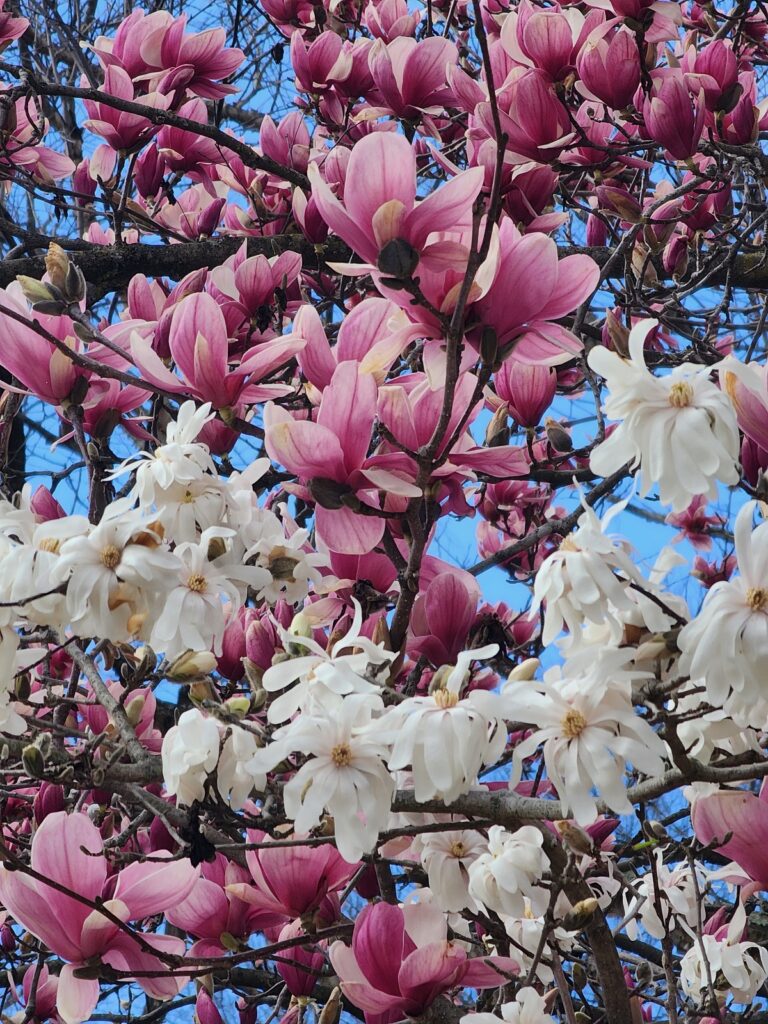
A small tree or a large shrub, the saucer magnolia produces pinkish-purple blossoms. The star magnolia develops fragrant white flowers that are about four inches in diameter. Someone, for some reason, decided these resembled a star (they don’t particularly).
In recent winters, both magnolias have bloomed in February at the Arboretum.
“You kind of have to catch them as they’re blooming,” BeCraft warned, “because you can get a cold night and they’re gone.”
Orchids
“If you’re looking for a warm place to come in the winter, the Arboretum’s greenhouse has lots of orchids that are in bloom in January and February,” BeCraft said.
SPRING
The Community Arboretum is a no-brainer destination for spring. Who doesn’t want to delight in new life after the dark days of winter?
Horse chestnut and buckeye trees
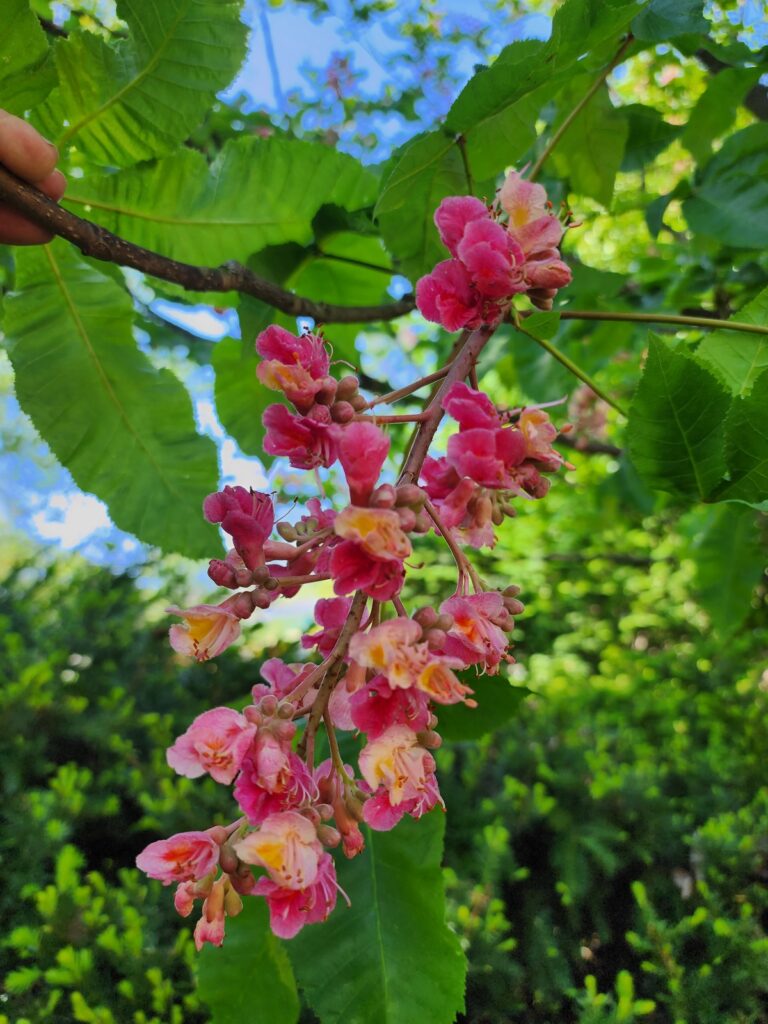
Found in the Children’s Garden Plant Zoo, the horse chestnut produces flowers that are white with a pink flush at their base.
The buckeye, which stands in the Arboretum’s Shade Garden, takes its name from the white scar that marks its brown seeds. Someone thought they resembled a deer eye. “The buckeyes are unique because they have red spikes of flowers,” Judd said.
Both bloom in April at the Arboretum.
Japanese snowbell
Found in the Arboretum’s Sensory Garden and on the deck of the City Garden, the Japanese snowbell is a disease-resistant tree. It produces “hundreds of white flowers that look like bells,” BeCraft said.
Spring ephemeral native plants
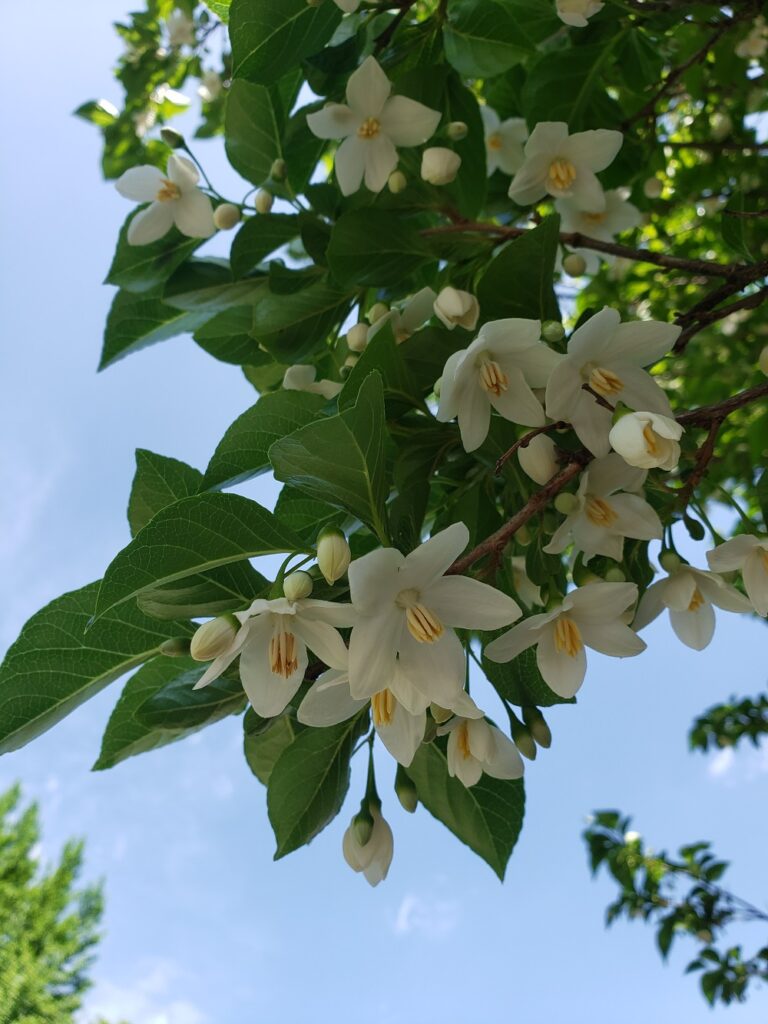
Visitors should head to the Shade Garden to see the ephemerals, which are named after their short life cycle. These plants bloom from March until May. “Spring is when those wildflowers are really showing off,” said Judd.
Her favorites include: the bloodroot, which has white petals surrounding golden yellow stamens; wild ginger with its red to purple, cup-shaped flower that hides beneath foliage; and the celandine poppy, which produces small clusters of yellow flowers.
Dove tree
This broadleaf deciduous tree can be found in the Arboretum’s Children’s Garden Plant Zoo.
“The dove tree has a white flower,” BeCraft said. “The flower has two petals and it basically resembles dove wings.”
Supporting the Arboretum
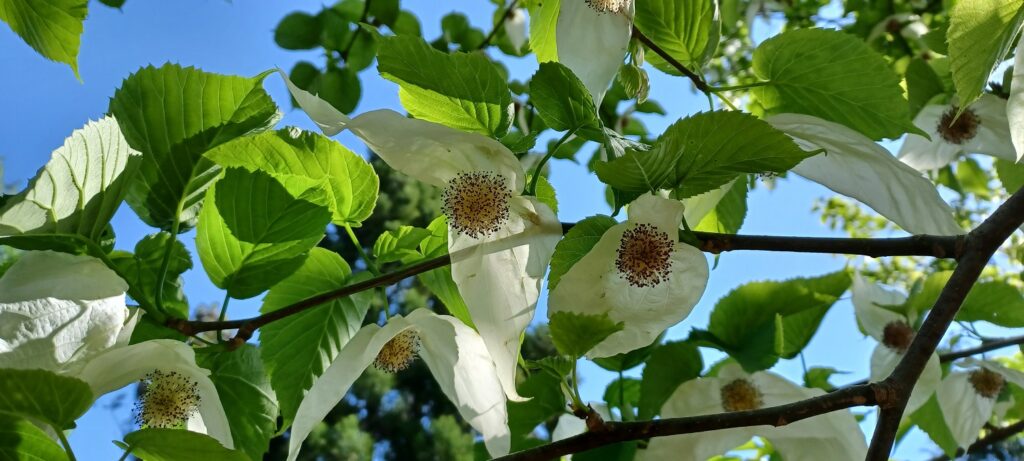
A common misconception is that the Arboretum receives state funding to cover upkeep to the gardens. Actually, it’s generosity from the community that keeps the Arboretum’s programs — and plants — alive and growing.
One way to support the gardens is to join the Friends of the Arboretum program. Membership begins at $25 for an individual. Perks to joining include a seasonal newsletter filled with horticulture insights and special members-only previews of the popular plant sales.
Fall pansy and perennial sale: late September
This sale is designed to keep area gardens colorful throughout the fall. Offerings include perennials and pansies (including the popular purple wave color) along with houseplants and vegetables.
Poinsettia sale: early December
In addition to poinsettias (which sell out quickly), the sale includes fresh-cut wreaths, centerpieces and swags.
Spring perennial plant sale: late March/early April
In addition to perennials, the sale includes succulents and tropical plants.
Spring bedding and vegetable plant sale: May
This is the biggest plant sale of the year, with offerings that include bedding and vegetable plants, herbs, hanging baskets and ferns.
For more information, go to virginiawestern.edu/arboretum
(This story was published in the Winter 2024 edition of Impact magazine, a publication of the Virginia Western Community College Educational Foundation.)
